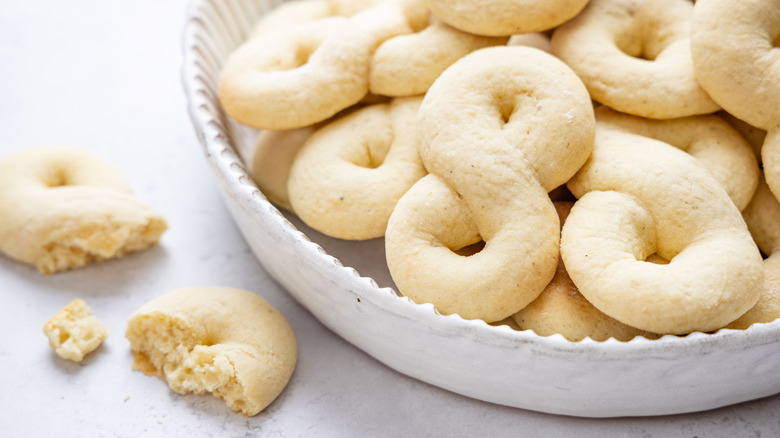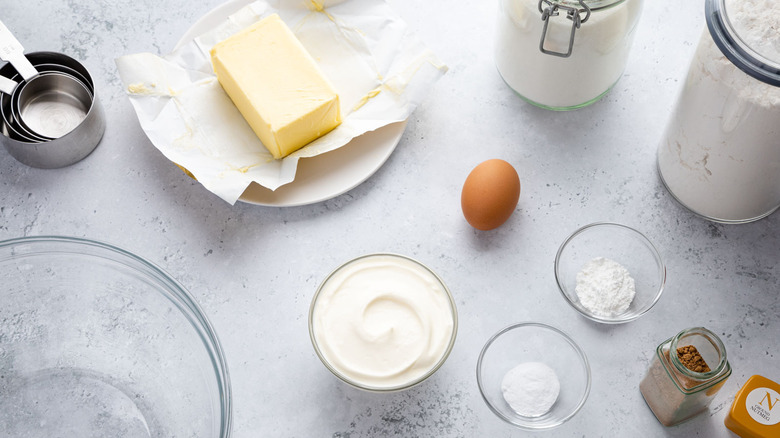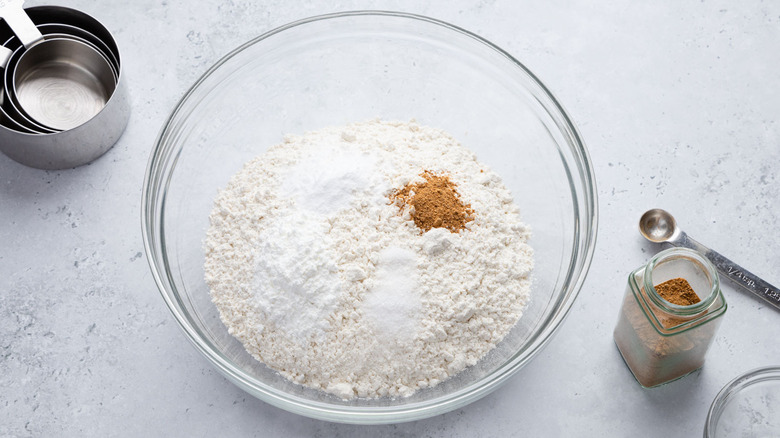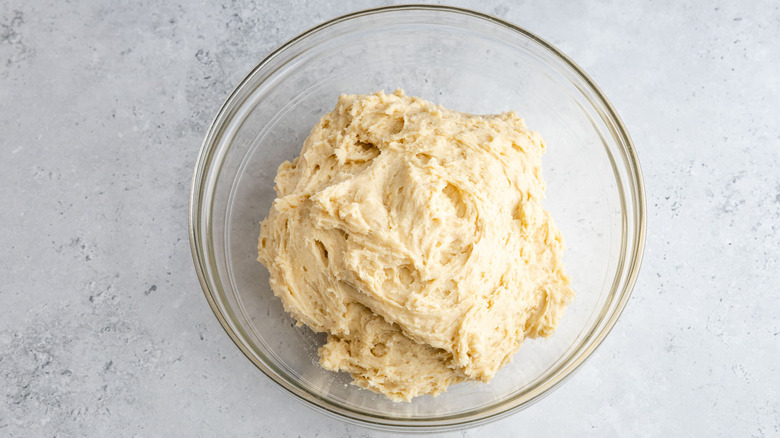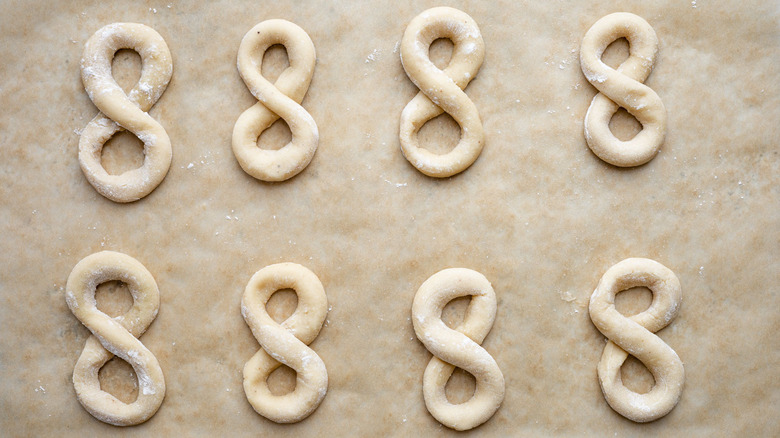Kringla Recipe
Ripe watermelon, fresh corn, and hot BBQ are a few of the finer tastes of the summer. Hearty soups and roasted meats are a staple of the fall. But by the time you get to the winter holiday, it's all about the kringla cookies. At least it's all about these cookies if you have a Scandinavian heritage. According to Definitions: "Kringle is a Scandinavian pastry, a Nordic variety of pretzel, which arrived with Roman Catholic monks in the 13th century [and] developed further into several kinds of sweet, salty, or filled pastries ... The word originates from the Old Norse kringla, meaning ring or circle."
No family from the Nordic lands? No problem: you can still enjoy a delightful Christmas cookie. Not remotely close to December 25th? Don't celebrate Christmas? Also not issues: these cookies are delicious any time of year. Or any time of day, for that matter.
And when you follow this recipe from chef and recipe developer Mark Beahm of The Sunday Baker, those Tom Petty song lyrics will be true: the waiting is the hardest part. "These cookies are somewhere between beginner and intermediate," Beahm says. "The hardest part about kringla is the shaping. But they puff up in the oven quite a bit, which can hide a lot of mistakes." And that's a present to yourself you can enjoy any time of year, Christmas season or not!
Gather your ingredients
Making a batch of kringla cookies calls for common ingredients used in just the right way to make uncommonly good treats. All told, you'll need all-purpose flour, baking powder, baking soda, salt, ground nutmeg, unsalted butter (softened, but not melted), sugar, sour cream, a large egg, and vanilla extract.
As for hardware, ideally you'll have a stand mixer you can use, but a large mixing bowl and a hand mixer or just a good stiff whisk work too, if need be. Aside from that, you just need measuring cups, a smaller bowl, and some baking sheets. Oh, and an oven, of course.
Combine the wet ingredients and dry ingredients in separate bowls
Whisk together the flour, baking powder, baking soda, salt, and nutmeg in a medium mixing bowl and then set this dry ingredient blend aside.
In the bowl of a stand mixer fitted with the paddle attachment (or in a large mixing bowl if using a hand mixer or a whisk), beat the softened butter and sugar on medium-high speed until the mixture is light and fluffy, which will take about 2 minutes. Once these are combined and fluffed well, add in the sour cream, egg, and vanilla extract and continue to beat until these are all well combined.
Combine wet and dry ingredients into dough, then cover and wait
Working slowly, start to add the flour mixture to the wet ingredients in the stand mixer bowl and mix on low speed until the dough comes together, fully integrating all of the ingredients together. "It is a soft dough," Beahm says, "thicker than a cake batter, but looser than sugar cookie dough."
Once everything is properly combined into an even, stiff cookie dough, use a sheet of plastic wrap or a snug, cinched layer of tin foil to cover the dough and then refrigerate it for at least 5 hours, or even overnight. "Definitely make sure the dough is cold before shaping [the cookies]," says Beahm. "They really need all that time in the fridge. I tried shaping them when the dough was warmer, and the dough stuck to everything. When the dough is cold, it is much more manageable," he explains.
Bake the kringla and enjoy
Once the kringla dough has chilled long enough, preheat the oven to 350 degrees Fahrenheit and remove the dough from the refrigerator.
Working on a well-floured surface, roll out a tablespoon's worth of dough at a time into a rope about 10 inches long and about the thickness of a pencil. Shape each rope into a loop, sealing the ends together with a bit of water on your finger tips. Now twist the ring once to form a figure 8, then transfer it to a greased or parchment-lined baking sheet. Repeat this with all of the dough, leaving at least 2 inches between each of the cookies.
Now bake the cookies for 7 minutes, or until the cookie bottoms are golden and the tops are still pale. And now, time to enjoy! "Kringla are soft and really fluffy," Beahm says. "I think they're perfect with a hot cup of coffee. Kringla are also great for cookie exchanges."
Best Kringla Recipe
While these tasty cookies might be more popular around the winter holidays, they're a delicious treat any time of year -- try one dunked in your morning coffee!
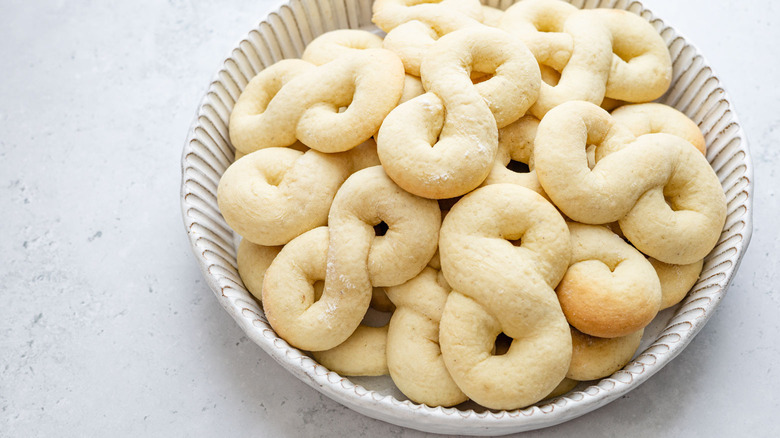
Ingredients
- 3 cups all-purpose flour
- 2 teaspoons baking powder
- 1 teaspoon baking soda
- ½ teaspoon salt
- ¼ teaspoon ground nutmeg
- ½ cup unsalted butter, softened
- 1 cup sugar
- 1 cup sour cream
- 1 large egg
- 1 teaspoon vanilla extract
Directions
- Whisk together the flour, baking powder, baking soda, salt, and nutmeg in a medium mixing bowl, then set aside.
- In the bowl of a stand mixer fitted with the paddle attachment, or in a large mixing bowl if using a hand mixer, beat the butter and sugar on medium-high speed until the mixture is light and fluffy, about 2 minutes.
- Add the sour cream, egg, and vanilla extract and beat until combined.
- Add the flour mixture and mix on low speed until the dough comes together.
- Cover the dough and refrigerate for at least 5 hours, or overnight.
- Preheat the oven to 350 degrees Fahrenheit.
- Remove the dough from the refrigerator.
- Working on a well-floured surface, roll a tablespoon of dough at a time into a rope about 10 inches long and about the thickness of a pencil. Shape each rope into a loop, sealing the ends together with a bit of water. Twist the ring once to form a figure 8.
- Transfer the shaped cookies to a greased or parchment-lined baking sheet, leaving at least 2 inches between each.
- Bake the cookies for 7 minutes, or until the cookie bottoms are golden but the tops are still pale.
- Enjoy any time of day!
Nutrition
| Calories per Serving | 97 |
| Total Fat | 4.1 g |
| Saturated Fat | 2.4 g |
| Trans Fat | 0.1 g |
| Cholesterol | 15.3 mg |
| Total Carbohydrates | 13.8 g |
| Dietary Fiber | 0.3 g |
| Total Sugars | 5.8 g |
| Sodium | 63.8 mg |
| Protein | 1.4 g |
